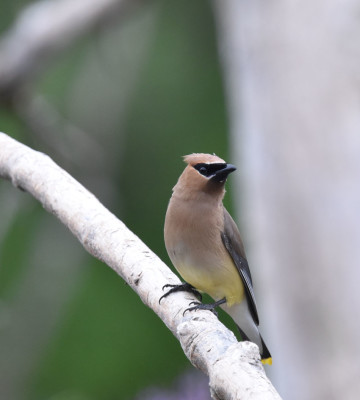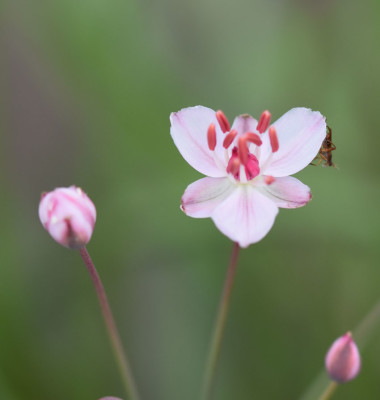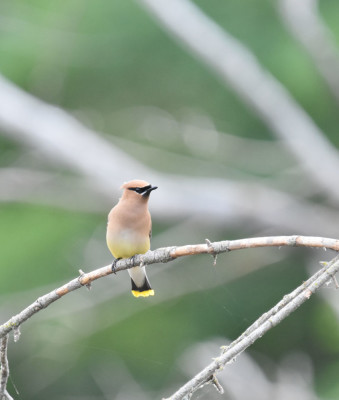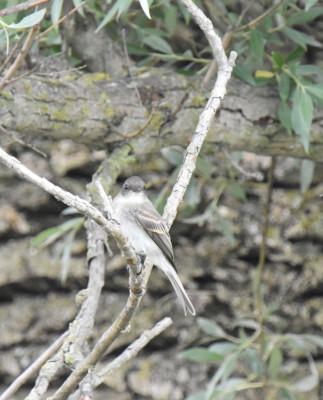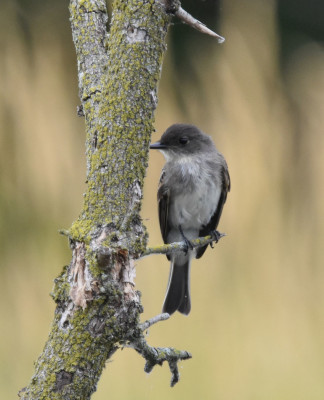When the heat and humidity rise in the GTA and the pollution index starts to climb, I have to slow down my pace if I want my ramble to stay enjoyable. One fun thing to do is to pick a likely spot and simply stay still, letting nature come to visit me. So this week, I spent an hour on an arrow of land pointing downstream in the middle of the Credit River: there were lots of interesting birds, bugs, flowers and frogs to see (and quite a few children, dogs, fisher-folk and fellow wanderers!)
While Waiting For Birds and Animals to Relax, I Can Study Flowers and Insects
It takes a few minutes for the amphibians and birds to settle down after I invade their territory. While I wait, I can usually find some new flowers, plants or insects to admire.
This week, the Arrowhead plants were in bloom. It’s possible this patch was planted by the Credit River Anglers Association. They’ve done a lot of work along the Credit planting native trees and helping to restore the banks and river bottom. Near me, I can see young poplars (I think) which are protected from the resident beaver by fencing.
A non-native plant, Flowering Rush was also in bloom.
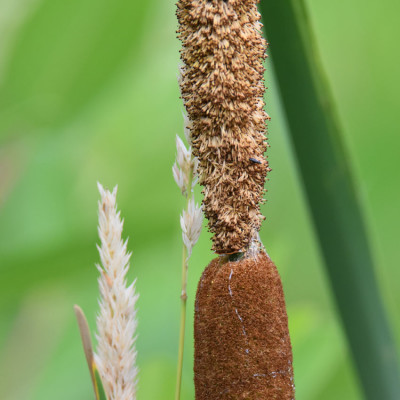
According to the Wildflowers of Riverwood book, the Common Cattail has no gap between the male and female flowers.
Native Broad-leaved Cattails and introduced Narrow-leaved Cattails danced in the welcome breeze. Their flower spikes looked fresh and velvety.
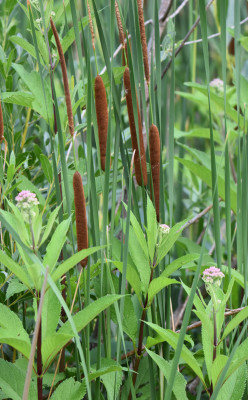
Narrow-leaved Cattails have a larger gap between the male and female flowers.
Cedar Waxwings Look Sleek Even in 90% Humidity
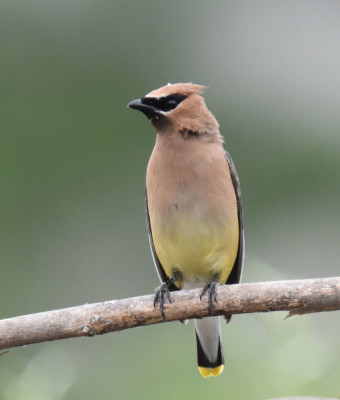
Ok, so this one looked a bit ruffled.
When the humidity shoots up, so does my hair. It puffs and ripples and bristles in a very unattractive way. Cedar Waxwings don’t seem to suffer from this problem. Even on the hottest, most humid days their feathers like so smoothly they look plastic.
When I first walked out onto the peninsula, the Waxwings were quite wary of me. They would abort their intended flights to perches near me and divert to other trees on the far bank. Within five minutes, however, they decided I must be a Deer or other boring herbivore and they went back to landing on a deadhead a few metres away.
The Waxwings were “hawking” for insects over the river. They would dart out, sometimes hover, then land to rest and preen. About six birds were nearby.
Keeping Quiet Is a Great Way to See More Green Frog Activity
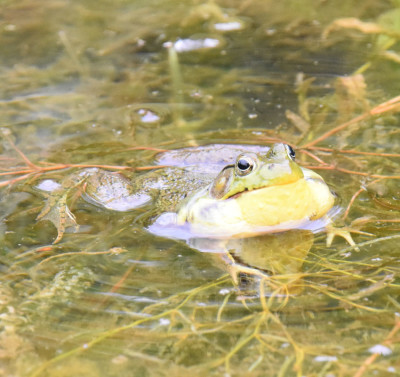
Apparently this look is very attractive to female Green Frogs.
If you walk briskly up to the river’s edge, you likely will mostly see ripples ringing out from where the wary Green Frogs dove in. If you stay still on the bank for a few minutes, though, many will gradually re-emerge. And on a morning in mid-July, many of the males will start calling.
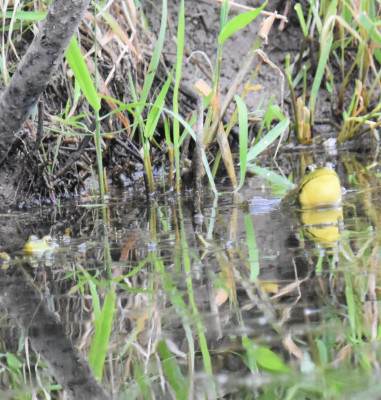
The aggressor to the right was chasing away all rivals including the one to the left.
I counted 12 Green Frogs of various sizes although I know there were more nearby. The males have yellow throats and the females have white ones. One male who was particularly annoyed with a rival chased him by “running” across the water several times. Frog wars are amusing since no one gets hurt.
Flycatchers Seek Insects Missed by the Green Frogs
There were two flycatchers, at least, also hunting for insects above the river. Both were quite far from where I was standing but were interesting to watch. They would perch and wait to see an interesting insect, then fly out to catch it.
I’m not 100% certain what types of flycatchers I was watching. I had thought they were Phoebes but I realized later I hadn’t noticed any tail wagging. There are other small birds such as Least, Willow and Alder Flycatchers which share this habitat.
If I count the Kingbirds that were busy somewhat upstream from me, I could actually see four birds from where I stood. I only noticed the Kingbirds when they went up with some Jays and Grackles after a passing Red-tailed Hawk.
Waiting Near Water Usually Leads to Interesting Sightings
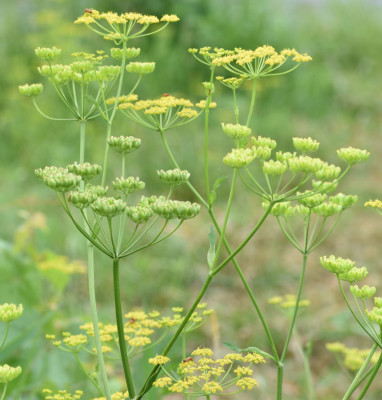
The small shapes on the Wild Parsnip blooms are Red Soldier Beetles eating the pollen.
Edge habitats where two different types of landscape intersect often attract a large variety of the local residents. For instance where I was standing along the Credit where the trees meet the river and the marsh meets the river, many different species of birds come to forage, drink and bathe and then leave again.
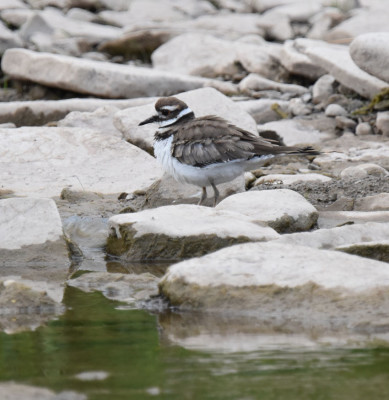
This Killdeer fluffed up its feathers briefly.
I saw Northern Rough-winged Swallows, Cliff Swallows, Grey Catbirds, Red-winged Blackbirds, Common Grackles, American Goldfinches, American Robins, Eastern Kingbirds, Song Sparrows, Cedar Waxwings, a Spotted Sandpiper, Killdeer and several other types of birds. Most of them didn’t stay as long as I did. Rather than going looking for them in various parts of the park, I let them come to me, or rather to the river beside me.

Even Common Grackles look uncommonly good when they choose an attractive perch.
No Deer Today
Many times people fishing along the River will see some of the local White-tailed Deer wading to or from the small islands and peninsulas in the Credit. I didn’t see any today. I guess that means I’ll have to go back another day and try again!
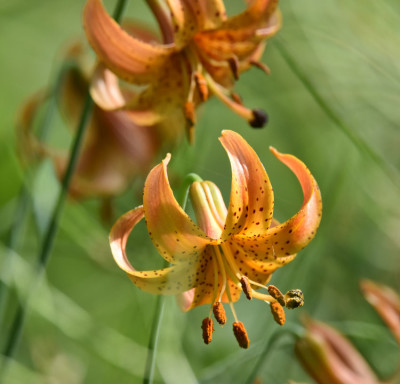
Michigan or Tiger Lily? Opinions are welcome!
Related Reading
Join In
Do you find you see more when you stop in a likely location and let the wildlife come to you? Please share your views with a comment.

